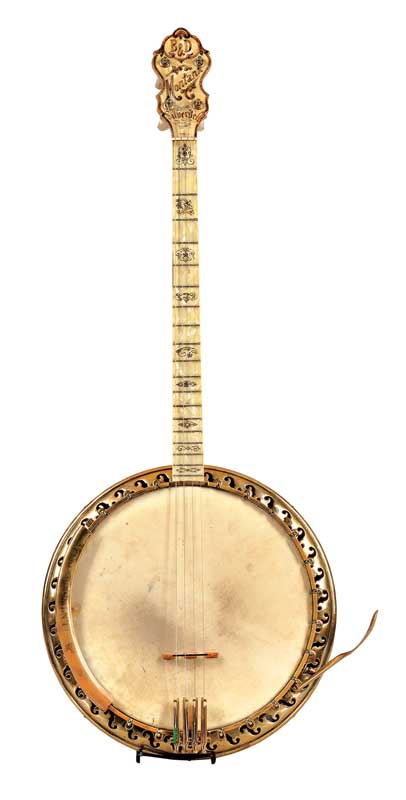Bacon & Day Banjo | Antiques & Collectibles
For me, listening to music is a live-out-loud experience. That’s why my iPod often sits idle, gathering dust and losing its charge. I usually forgo its technical isolation, preferring instead to turn the knob, sink into a chair, and assume the full weight of music with my whole being. At times it pours out heavy […]

Coffee By Design | Portland, Maine
Photo Credit : Katherine KeenanFor me, listening to music is a live-out-loud experience. That’s why my iPod often sits idle, gathering dust and losing its charge. I usually forgo its technical isolation, preferring instead to turn the knob, sink into a chair, and assume the full weight of music with my whole being. At times it pours out heavy and thick like syrup, sweetly coating everything in the room, then pooling in the empty spaces around me. Other times, it’s a cleansing rite, soaking into ears, chest, and limbs, reverberating in bones, feet, and fingertips. Experiences like these awaken all the senses; that’s what makes listening to music so intoxicating.
I write often in this column about things that delight the eye. This time I celebrate something you can enjoy not only with your ears but with your entire body: the sound of a Bacon & Day banjo.
Banjos in America date back to the 17th century, when slaves introduced colonial settlers to the African banjar or banza, a simple stringed instrument fashioned from animal skin stretched over an open gourd. Banjars were so common that even Thomas Jefferson referred to them in a footnote in his Notes on the State of Virginia in 1781. By the mid-19th century, the modern-day banjo was played in traveling minstrel shows, influencing music styles across America, Ireland, and the British Isles. The early 1900s through the 1920s witnessed the golden age of the banjo in popular music.
In 1906, Frederick Bacon, a famous banjo player, founded the Bacon Manufacturing Company in Forest Dale, Vermont. At first he marketed banjos made by other manufacturers; then he began selling four- and five-string banjos of his own design. In 1920, Bacon moved his operation to Groton, Connecticut, where he renamed his enterprise the Bacon Banjo Company. In 1922, he was joined by David L. Day, a talented designer, formerly of the Vega Company, one of the most widely known banjo makers of the era.
Their collaboration resulted in the Bacon & Day series, most notably its “Silver Bell” line, considered the finest tenor and plectrum banjos ever made–heralded for their rich, voluminous sound, impeccable cutting power, and superb craftsmanship. They were pricey, selling from $400 to $900, at a time when most other banjos went for $100 to $400. In the 1930s, though, the popularity of banjo music began to decline, and Bacon & Day was delivered its final tragic blow when the great Hurricane of ’38 destroyed the factory in September of that year. (After that, the Gretsch Company produced banjos under the Bacon name into the 1960s.)
In today’s market, original Bacon & Day instruments are prized as collector’s items, fetching higher prices than banjos by any other maker. But the vintage musical-instruments market is often driven by the tastes of the times. “Ten years ago, you couldn’t give away tenor banjos,” notes David Bonsey, head of Skinner’s Fine Musical Instruments department, “but with the resurgence of folk and roots music, original Bacon & Day banjos are now bringing somewhere between $2,000 and $3,000 at auction.” You’ll know your piece is a Bacon & Day design if it features the B&D logo on the peghead. Banjos designed solely by Fred Bacon carry the name Bacon in script.
I’m no musician, but I know it must be a powerful feeling to play such a fine instrument: to feel its weight, run a hand along its polished surface, and examine the mastery of its construction; to pick the strings, feel the vibration, and finally hear its big sound ring out, knowing you’re the one who’s making it sing. Now that’s a whole-body experience.
Catherine Riedel represents Skinner Auctioneers and Appraisers of Boston and Marlborough, Massachusetts. 617-350-5400, 508-970-3000; skinnerinc.com







